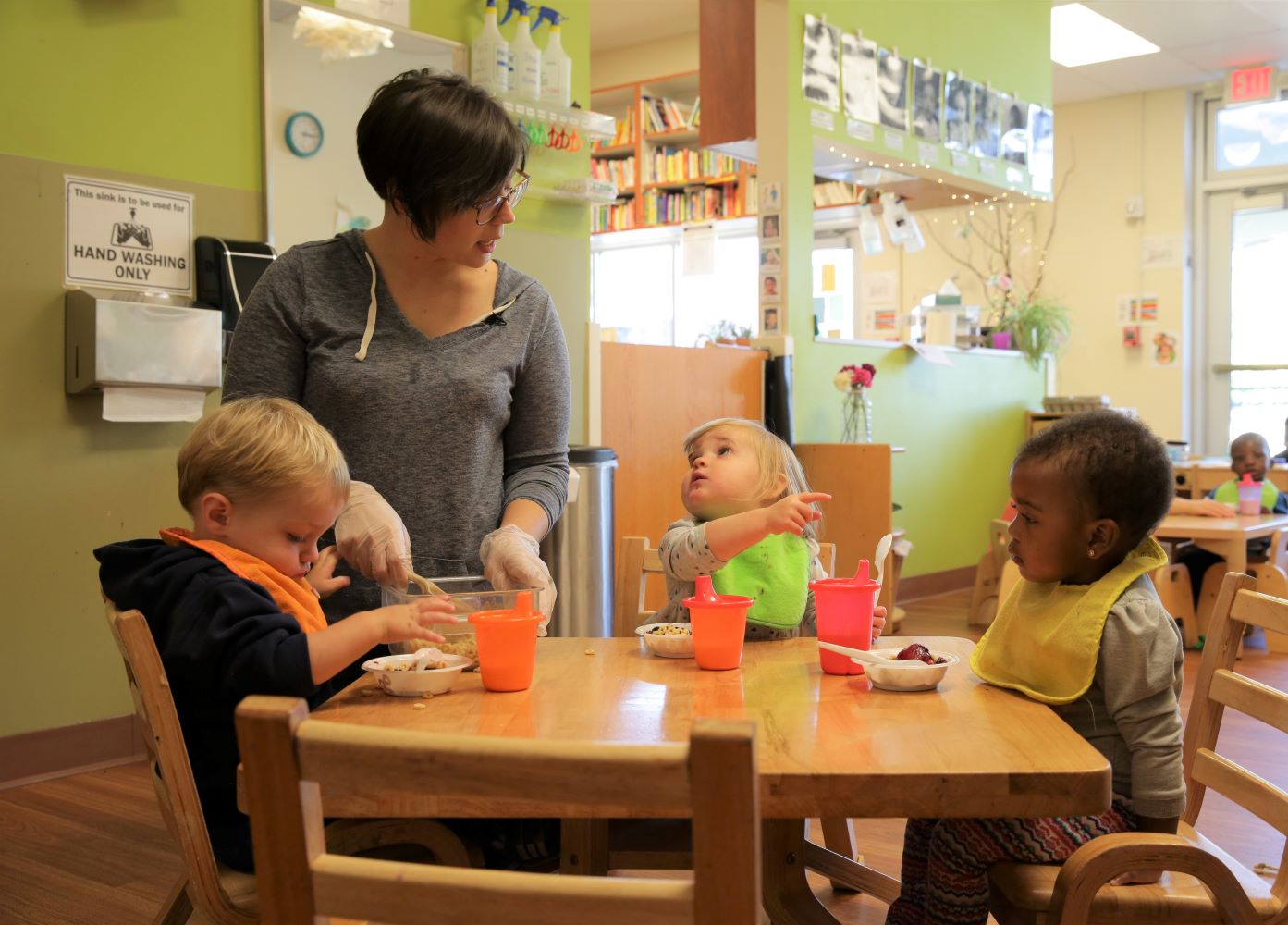
Caregiving routines — arrival and departure, feeding, meals and snacks, diapering and toileting, dressing, and napping — provide a framework for an infant or toddler’s day. Routine care is far from routine. A significant amount of individualization occurs during routines; they offer teachers, home visitors, and family and child care providers many opportunities to observe and understand each child’s ways and preferences and support development and learning across the ELOF domains. During routine care, infants and toddlers have adults’ undivided attention as they focus on meeting children’s needs and getting to know them. Routines offer opportunities to build relationships with each infant and toddler that promote attachment and trust. These are developmental milestones that are critical for children’s sense of security and willingness to explore people and objects in their environments.
Routines involve children’s bodily needs, very intimate care, and potentially different perspectives from that of the family, so they should be highly individualized. In group care settings, each infant’s and toddler’s routine care is based on his or her own readiness and timetable for feeding, diapering and toilet learning, and sleep.[7] How the routine is carried out and when the routine occurs should be closely coordinated with children’s families so that care is consistent between home and the program. Because these routines are so individualized, they should be carried out by the child’s primary caregiver whenever possible.
Families in home-based programs may individualize routine care for their infants and toddlers according to a combination of children’s needs, family schedules, and cultural beliefs and practices. Home visitors can work collaboratively with families to address topics such as using routine care times to support their child’s development and learning and changing routine care practices as children get older.
An important part of individualizing routines is rituals. People often use the terms “rituals” and “routines” interchangeably, but they are not the same. According to Gillespie and Petersen, routines are “repeated, predictable events that provide a foundation for the daily tasks in a child’s life … Individualizing a routine means that the sequence is the same but the actions and timing may vary to accommodate the needs of individual children.” Rituals, in general, are “special actions that help us navigate emotionally important events or transitions in our lives as well as enhance aspects of our daily routines to deepen our connections and relationships.” For infants and toddlers, a ritual is “a special practice that helps a child accept aspects of a routine, even an individualized routine, that are stressful.” Rituals that adults develop with children and use at home or in group care can ease emotionally loaded situations such as separations (including going to sleep), feeding and meal times, and learning to use the toilet.
In the previous vignette, Jandro and Sierra’s dad go through a goodbye ritual with Sierra when her dad drops her off. The sequence happens each morning and assists Sierra in transitioning into the EHS setting. Before Jandro and Sierra’s dad figured out the ritual, drop-off times were painful for everyone. Sierra would cry, cling to her dad, and take a long time before she was able to join the children and teachers in her group. Now, after a few months of this ritual, Sierra knows what to expect and transitions are much easier.
Coordinating routine care between home and program may sometimes be challenging. Staff attitudes and beliefs about how routines should be carried out may differ from what families believe and do. Here are some suggestions for engaging staff in resolving issues that arise around how and when routine care happens:
- Use team meetings, staff meetings, and reflective supervision sessions to discuss with staff their personal views and how they are the same as or different from families’ views. Suggest strategies for balancing families’ needs and desires with program policies, local and state licensing regulations, and HSPPS.
- Share with staff resources such as Multicultural Principles for Early Childhood Leaders.
Read more:
Resource Type: Article
National Centers: Early Childhood Development, Teaching and Learning
Age Group: Infants and Toddlers
Audience: Directors and Managers
Last Updated: September 12, 2024